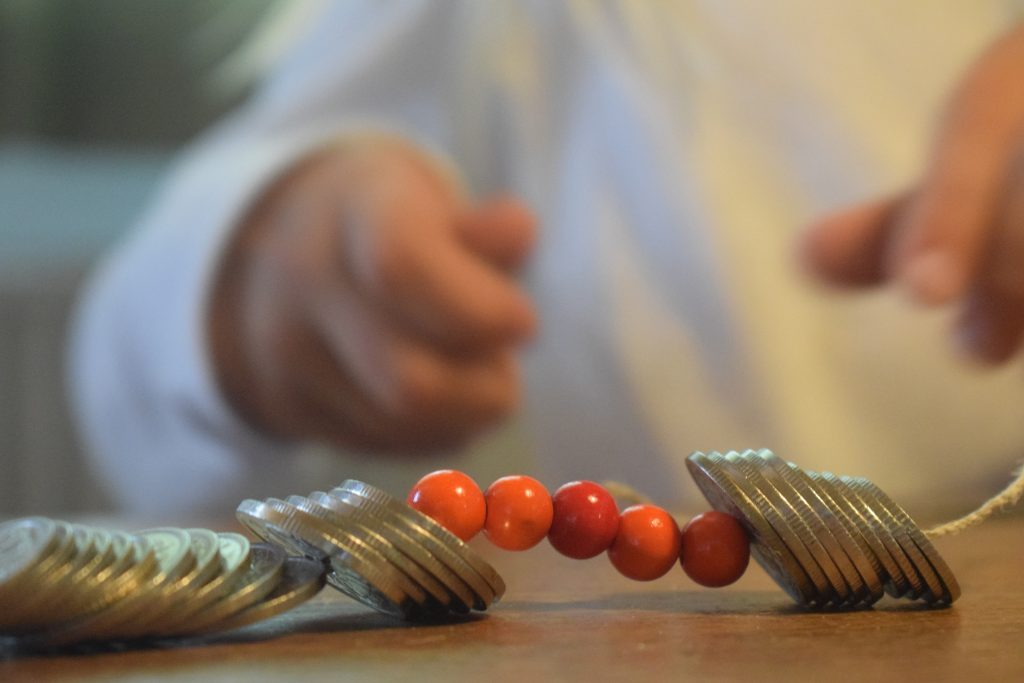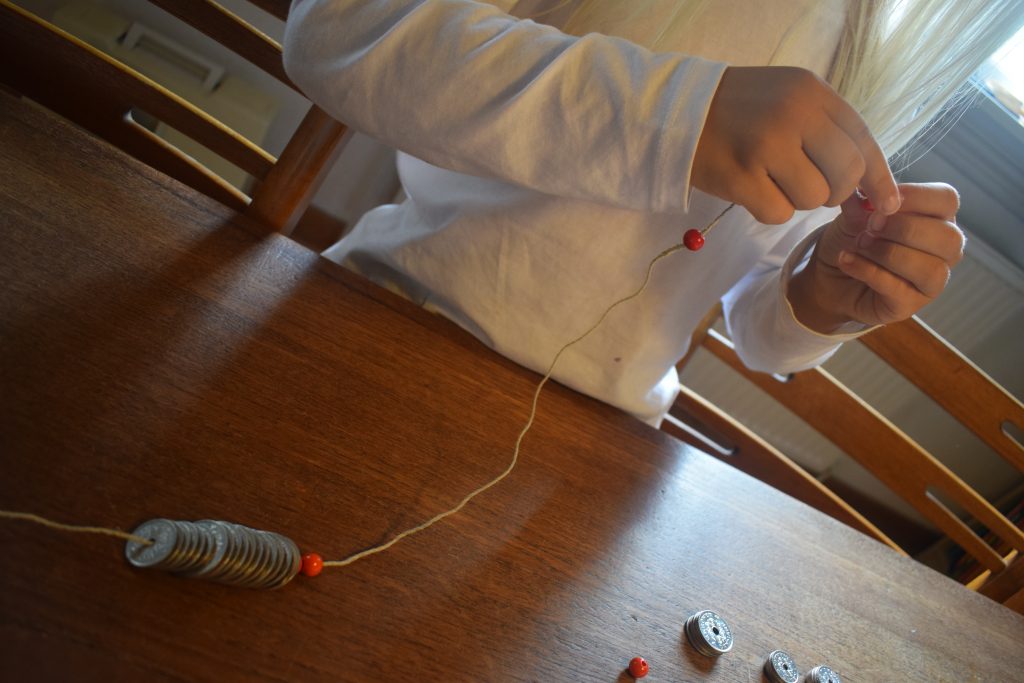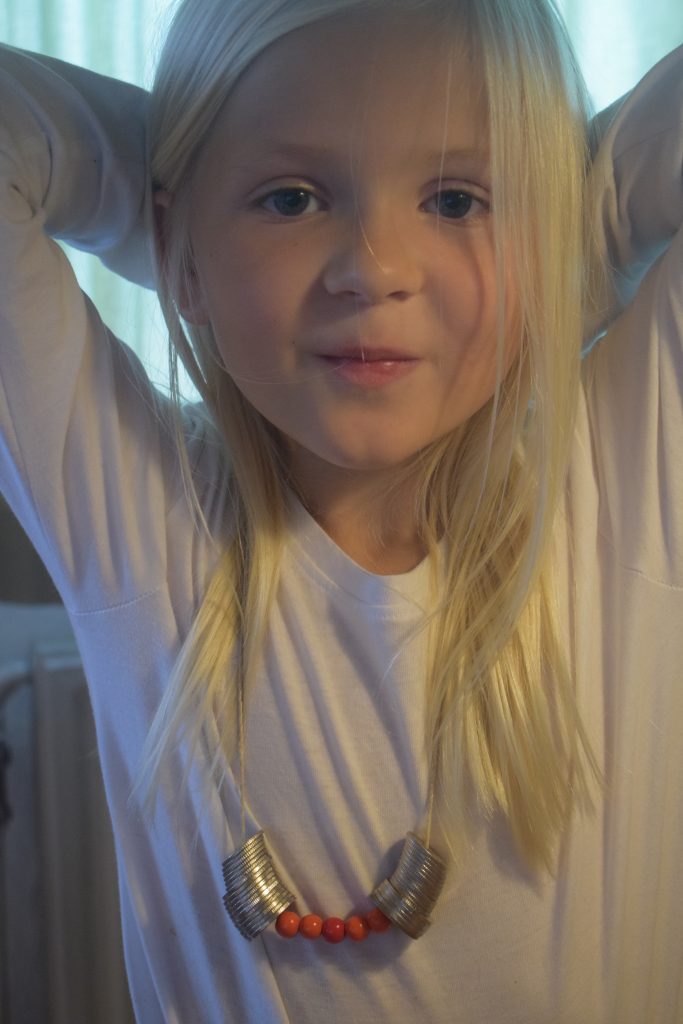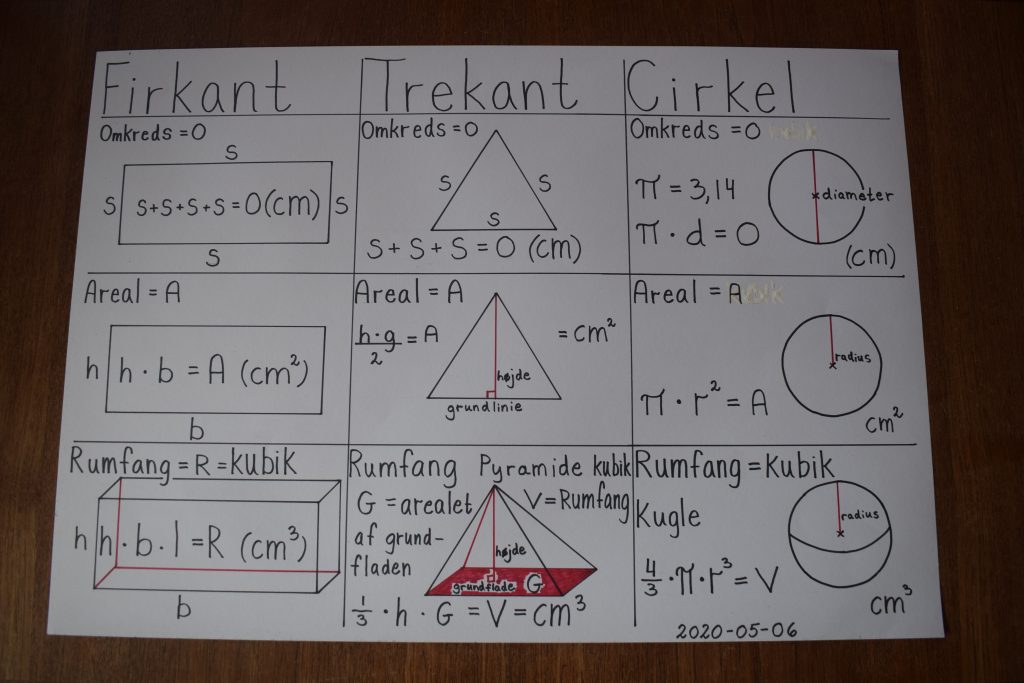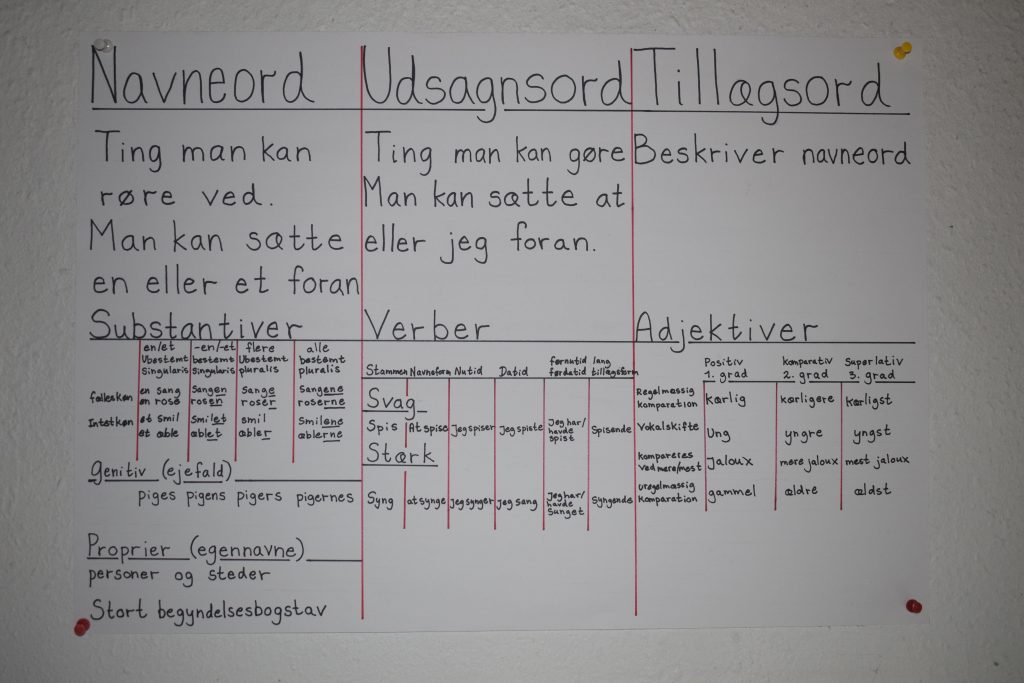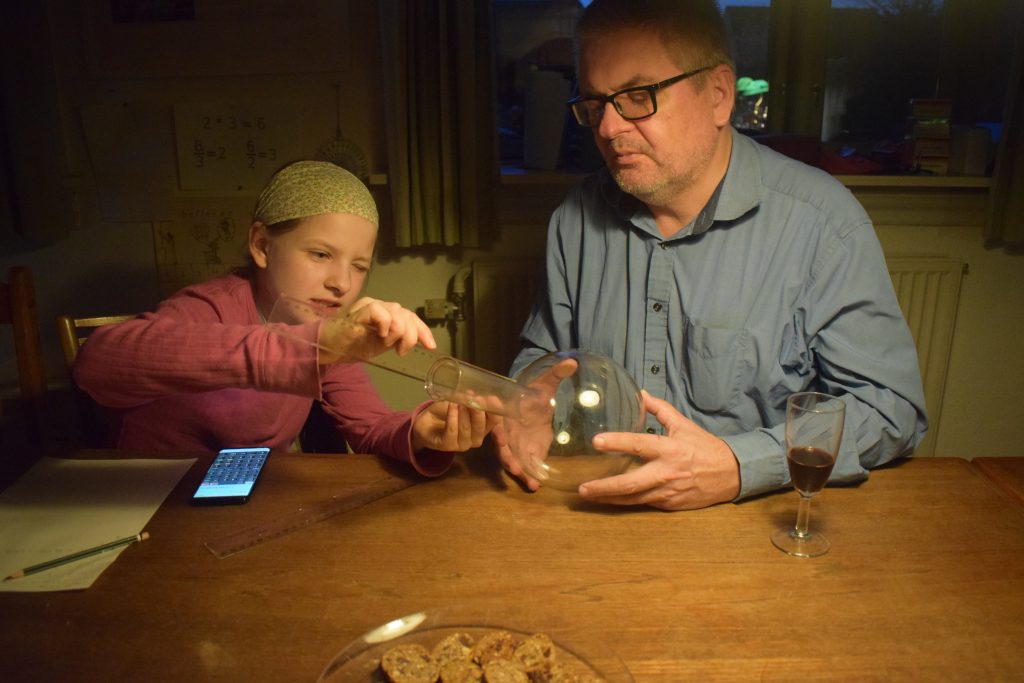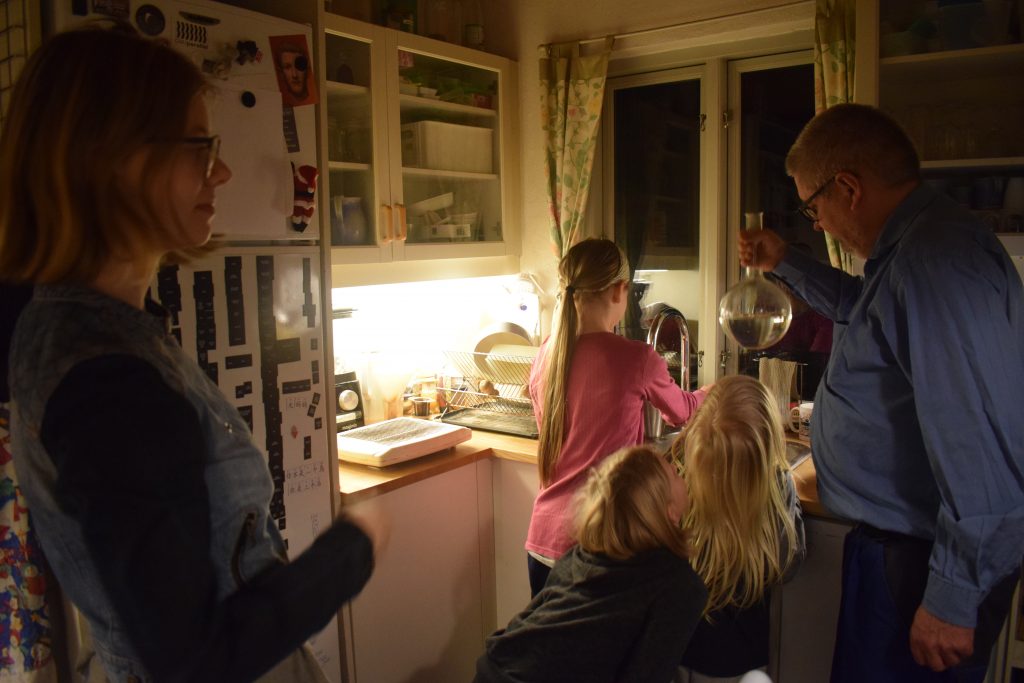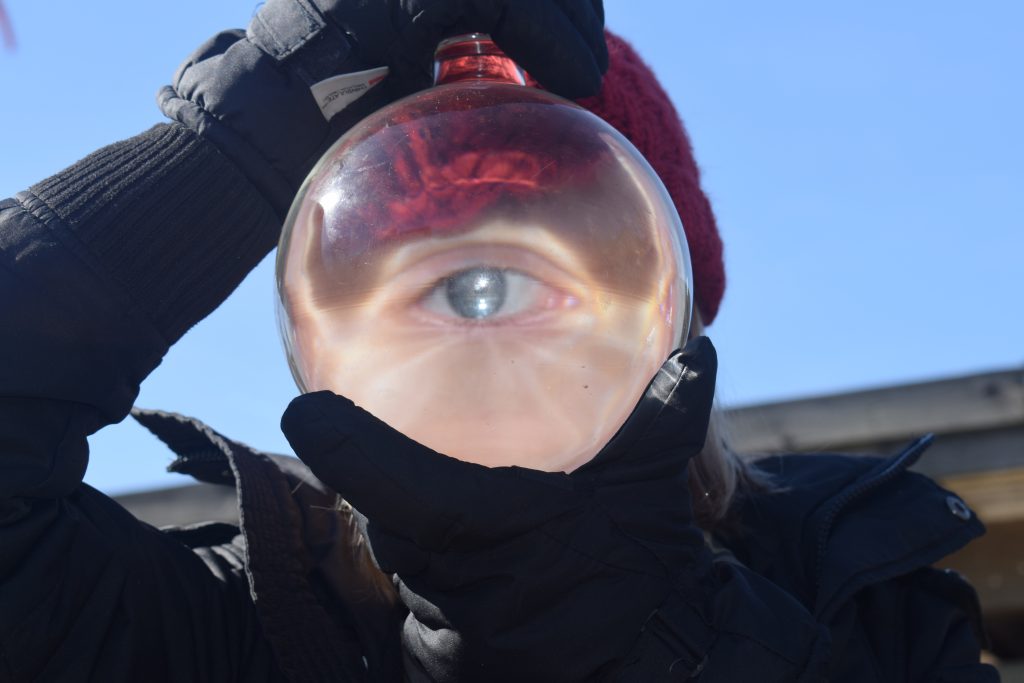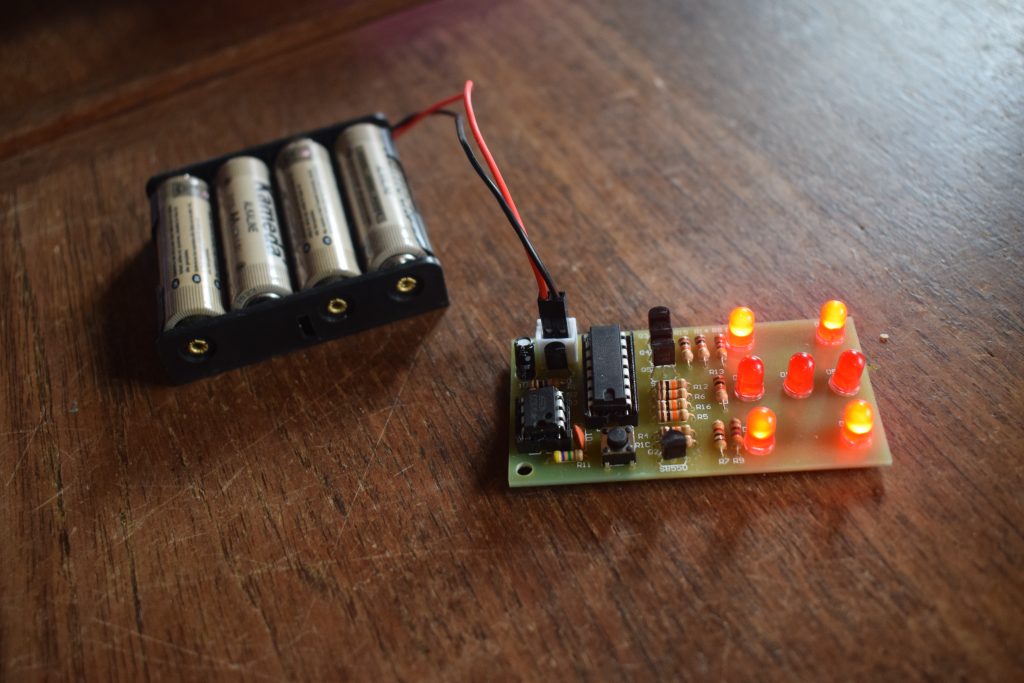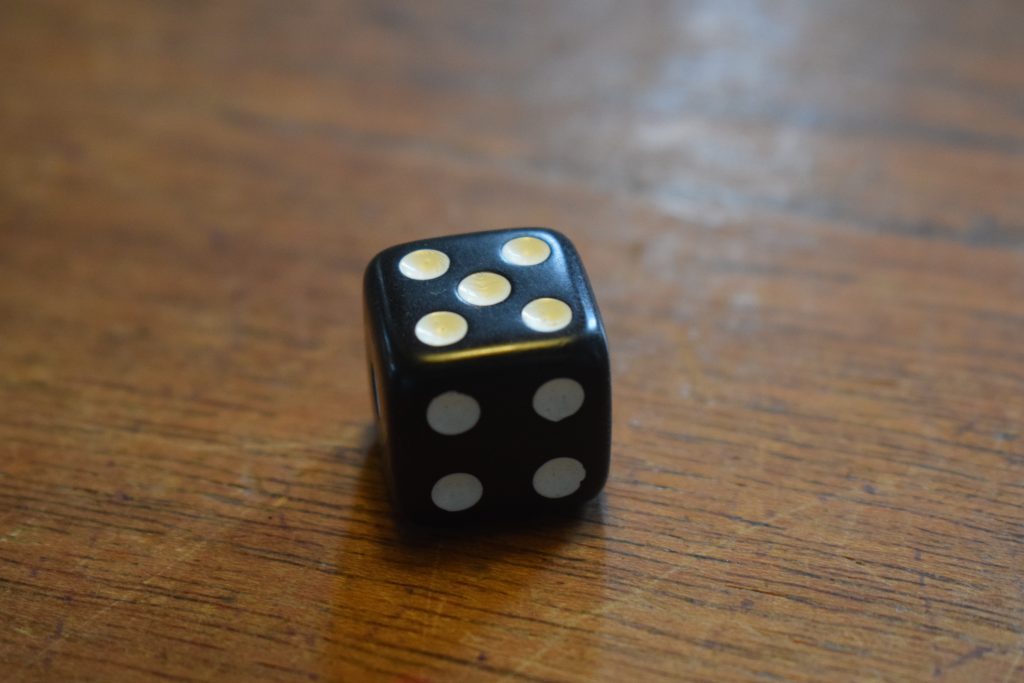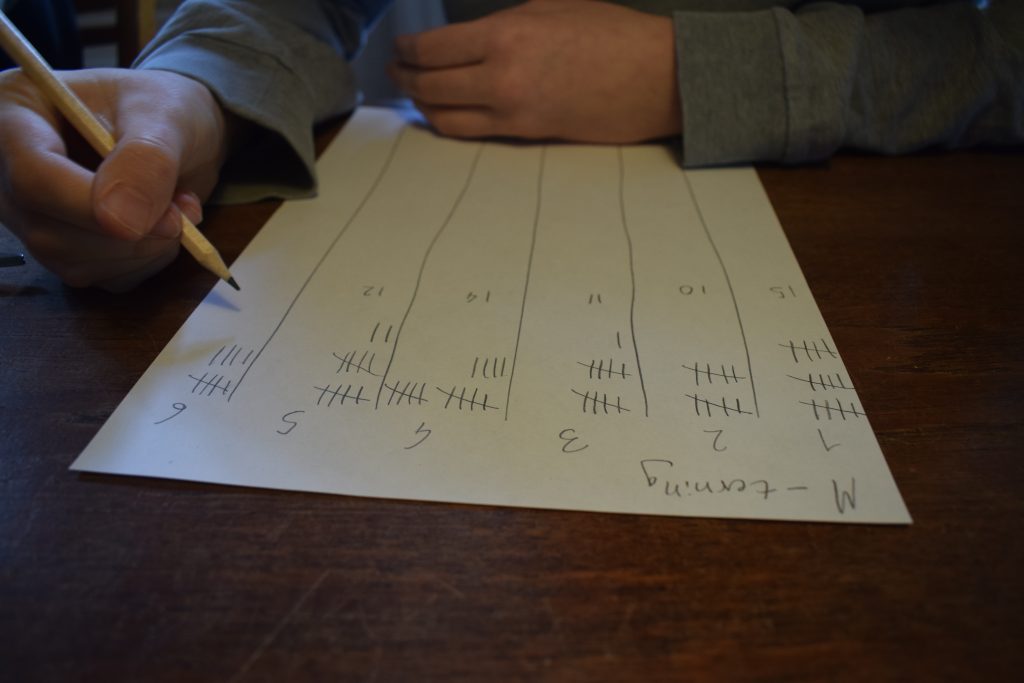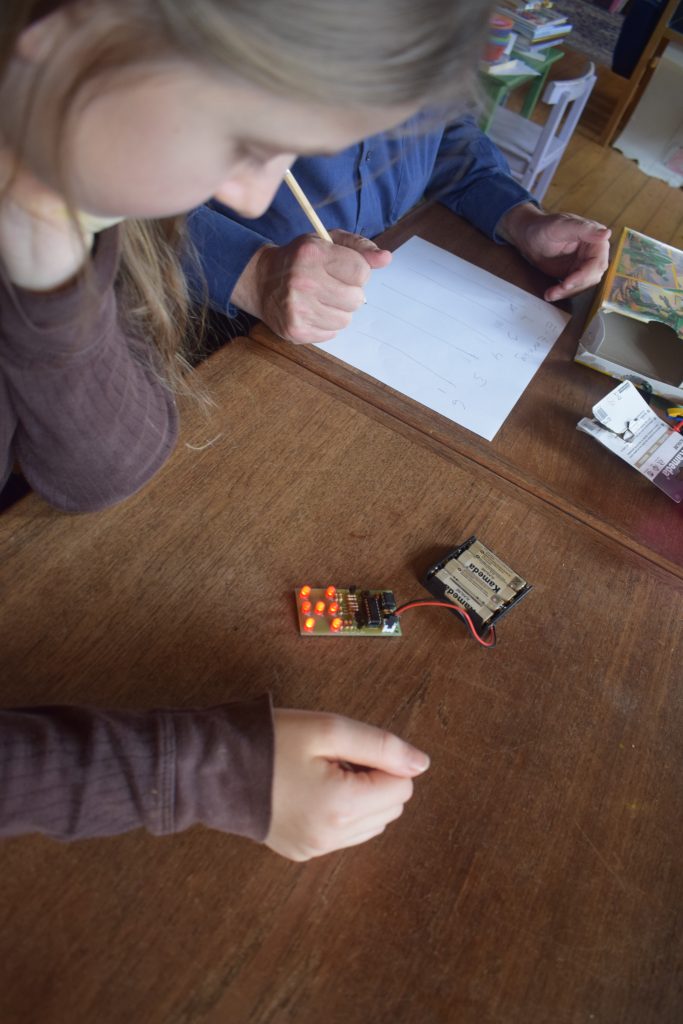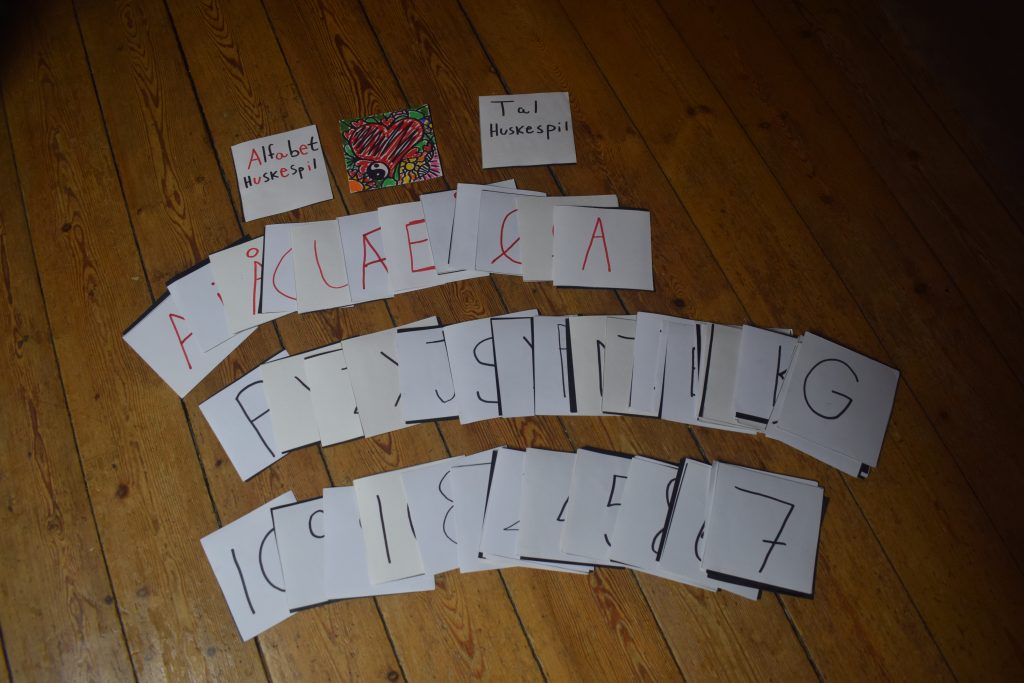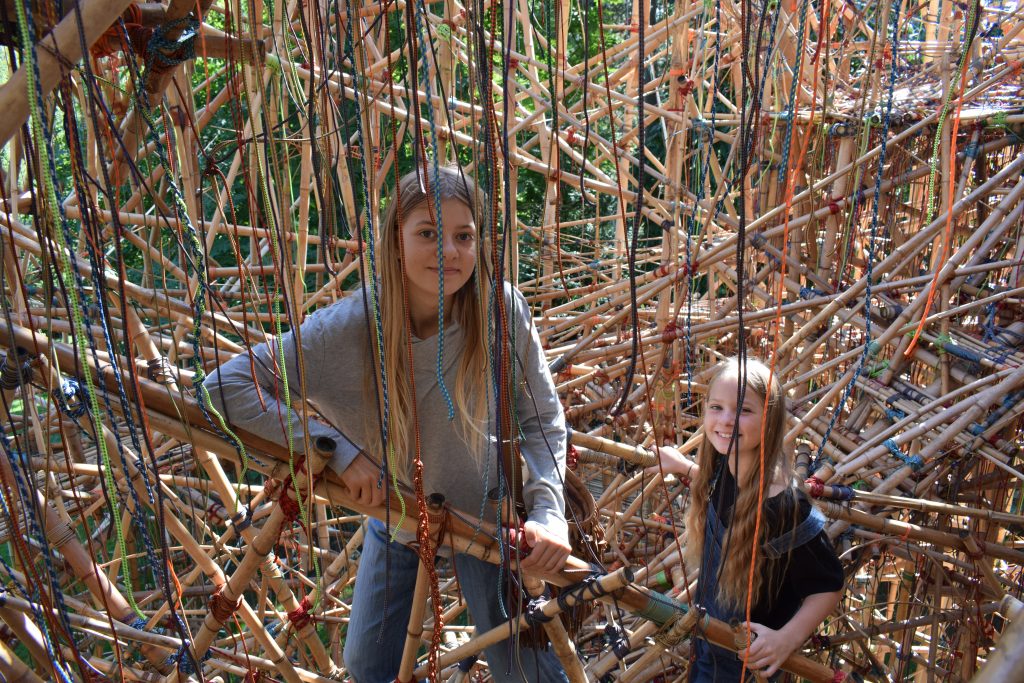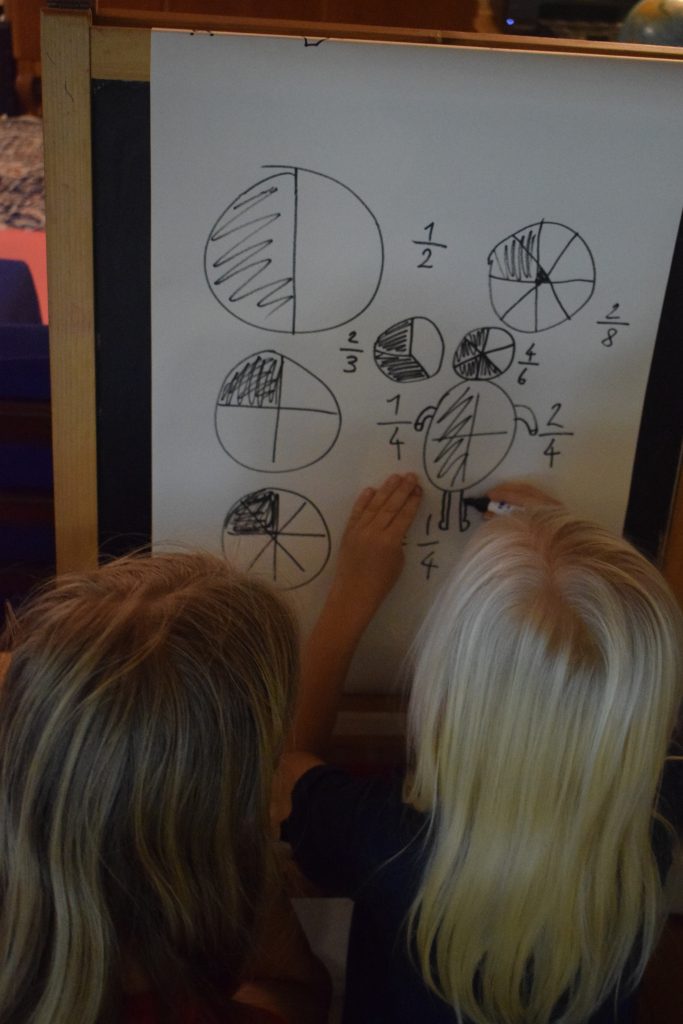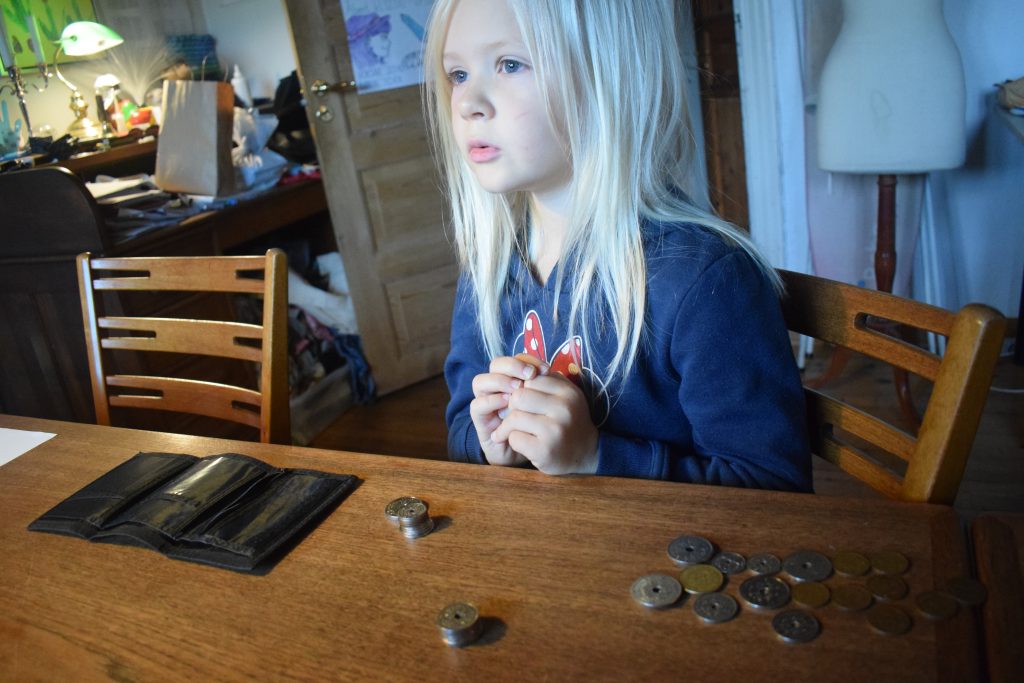We prefer cash to digital money, when it comes to teaching the kids about money. The hand to brain connection is so much easier for children to grasp, that the imaginary world of digital money.
When you hold coins or notes in your hand, it is so much easier to get a realistic idea of how much you own. When you have spend your money physically with cash, they are gone. You cannot see them anymore. Much easier for children to take in.
Using cash instead of digital money will also help your kid (and most adults :)) to save money. It is much harder to give away cash in your pocket, than virtual money on the internet. So you will start saving, when you go back to using cash.
We did this little creative project with our 7 year old, when he was to make a present for his friend. We are so lucky in Denmark to have coins with holes in them. That made this project possible. A cash necklace.
